As daroczig mentions, each set of factor loadings gets its own dimension. So plotting in five dimensions is not only difficult, but often inadvisable.
You can, though, use a scatterplot matrix to display each pair of factor loadings. Using the example you cite from Venables & Ripley:
#Reproducing factor analysis from Venables & Ripley
#Note I'm only doing three factors, not five
data(ability.cov)
ability.FA <- factanal(covmat = ability.cov,factor = 3, rotation = "promax")
load <- loadings(ability.FA)
rot <- ability.FA$rot
#Pairs of factor loadings to plot
ind <- combn(1:3,2)
par(mfrow = c(2,2))
nms <- row.names(load)
#Loop over pairs of factors and draw each plot
for (i in 1:3){
eqscplot(load[,ind[1,i]],load[,ind[2,i]],xlim = c(-1,1),
ylim = c(-0.5,1.5),type = "n",
xlab = paste("Factor",as.character(ind[1,i])),
ylab = paste("Factor",as.character(ind[2,i])))
text(load[,ind[1,i]],load[,ind[2,i]],labels = nms)
arrows(c(0,0),c(0,0),rot[ind[,i],ind[,i]][,1],
rot[ind[,i],ind[,i]][,2],length = 0.1)
}
which for me resulting in the following plot:

Note that I had to play a little with the the x and y limits, as well as the various other fiddly bits. Your data will be different and will require different adjustments. Also, plotting each pair of factor loadings with five factors will make for a rather busy collection of scatterplots.





